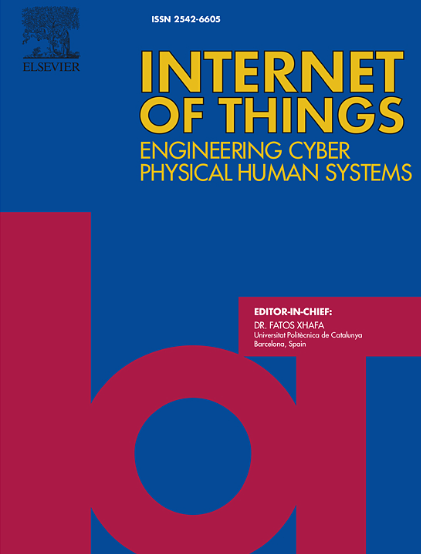基于LoRaWAN的远程分布式系统可靠PID双速率控制器
IF 6
3区 计算机科学
Q1 COMPUTER SCIENCE, INFORMATION SYSTEMS
引用次数: 0
摘要
随着数字通信系统的发展,网络控制系统(NSC)作为自动化任务的一种可行的控制方案出现了。最近,有人建议利用无处不在的互联网连接来实现NCS,为工业物联网范式铺平道路。特别是,转向控制即服务(CaaS)将允许从云计算提供的适应性和可伸缩性中获益。不幸的是,自动化系统的需求与办公室和企业场景所要求的需求非常不同。用于与云连接的通信基础设施的性能和可用性会严重影响控制策略的有效性。本研究评估了双速率控制器的实现,通过适当的预测器增强,以促进NCS利用潜在不稳定的LoRaWAN网络。选择LoRaWAN作为一种低功率广域网,是因为它在学术和工业领域的广泛应用。此外,该标准明确地描述了后端实体,促进了新的CaaS业务模型。以一个由放置在被控局部工厂中的单个LoRaWAN端节点设备连接到单个网关网络组成的控制系统为例,对二阶时间连续系统的DR-PID控制策略进行仿真。该仿真模型结合了LoRaWAN的特性,如节点发起的事务,并综合了可测量的参数,如上行链路和下行链路损耗。该模型被用来评估相对于没有通信损失的参考理想情况下的控制性能。定义了一个优点数字,使所建议的方法优于普通LoRaWAN NCS的断言成为可能。此外,提出了具有不同扩频因子(SF)的时频叠加帧的拟正交性,作为利用增大扩频因子值所提供的增强抗噪性的替代方法。本文章由计算机程序翻译,如有差异,请以英文原文为准。
Reliable PID dual-rate controller based on LoRaWAN for long-range distributed systems
With the advances in digital communication systems, Network Control Systems (NSC) appeared as a feasible control solution for automation tasks. More recently, the exploitation of ubiquitous Internet connectivity for implementing a NCS has been suggested, paving the way for the Industrial Internet-of-Things paradigm. In particular, moving towards the Control as a Service (CaaS) would allow to benefit from the adaptability and scalability offered by cloud computing. Unfortunately, the needs of automation systems are very different from those dictated by the office and enterprise scenarios. The performance and availability of communication infrastructure used for connecting with the cloud can severely affect the control strategy effectiveness. This study assesses the implementation of a dual-rate controller, enhanced by an appropriate predictor, to facilitate NCS utilizing a potentially unstable LoRaWAN network. The selection of LoRaWAN, a type of Low Power Wide Area Network, is due to its extensive utilization in academic and industrial sectors. Moreover, the standard explicitly delineates backend entities, facilitating novel CaaS business models. A case study of a control system composed of a single LoRaWAN end-node device placed in a local plant to be controlled and connected to a single gateway network is employed to simulate the DR-PID control strategy on a second-order time-continuous system. The simulation model incorporates LoRaWAN characteristics, such as node-initiated transactions, and synthesizes measurable parameters, such as up-link and down-link losses. This model has been employed to assess control performance relative to a reference ideal situation in which communication losses are absent. A figure of merit is defined, enabling the assertion of the suggested approach’s superiority over the plain LoRaWAN NCS. Furthermore, the quasi-orthogonality of time and frequency superposed frames with varying Spreading Factors (SF) is proposed as an alternate method to leverage the enhanced noise immunity provided by elevated SF values.
求助全文
通过发布文献求助,成功后即可免费获取论文全文。
去求助
来源期刊

Internet of Things
Multiple-
CiteScore
3.60
自引率
5.10%
发文量
115
审稿时长
37 days
期刊介绍:
Internet of Things; Engineering Cyber Physical Human Systems is a comprehensive journal encouraging cross collaboration between researchers, engineers and practitioners in the field of IoT & Cyber Physical Human Systems. The journal offers a unique platform to exchange scientific information on the entire breadth of technology, science, and societal applications of the IoT.
The journal will place a high priority on timely publication, and provide a home for high quality.
Furthermore, IOT is interested in publishing topical Special Issues on any aspect of IOT.
 求助内容:
求助内容: 应助结果提醒方式:
应助结果提醒方式:


